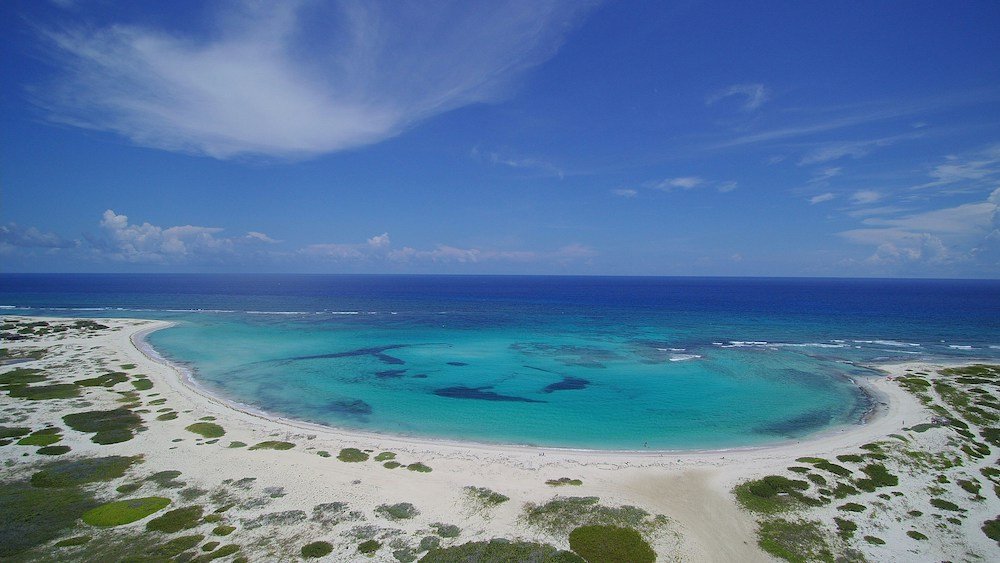
Want to discover where is Curacao Island and why you should visit?
Nestled in the heart of the Caribbean Sea lies a gem that beckons travelers with its vibrant culture, breathtaking landscapes, and inviting tropical climate.
This gem is Curacao Island, a destination that offers more than just picturesque beaches and azure waters.
As we delve into the essence of this captivating island, one question often arises among curious travelers and adventure seekers alike: “Where is Curacao Island?” This inquiry is not just about pinpointing a location on a map; it’s about discovering a world brimming with rich history, diverse cultures, and endless opportunities for exploration.
It represents a gateway to understanding the unique appeal of Curacao, highlighting its position as a crossroads of cultural influences and a haven for those seeking an escape that combines relaxation with rich cultural experiences.
Situated off the coast of Venezuela, in the southern Caribbean Sea, Curacao stands out as part of the ABC islands, alongside Aruba and Bonaire.
This strategic location shields it from the hurricane belt, making it a year-round paradise for visitors.
In 2024, Curacao is poised to be a must-visit destination for several compelling reasons.
From its world-renowned diving sites, featuring some of the most pristine coral reefs in the Caribbean, to its lively festivals that showcase the island’s multicultural heritage, Curacao offers an array of experiences that cater to all types of travelers.
Whether you’re a history enthusiast eager to explore the vibrant streets of Willemstad, a UNESCO World Heritage site, or an adventurer ready to dive into the crystal-clear waters, Curacao promises an unforgettable journey.
Join us as we explore the many reasons why Curacao should be at the top of your travel list in 2024.
From its natural beauty and cultural richness to its welcoming atmosphere and sustainable tourism initiatives, Curacao is more than a destination; it’s an experience that will leave you enchanted and yearning for more.
Geographical Location of Curacao
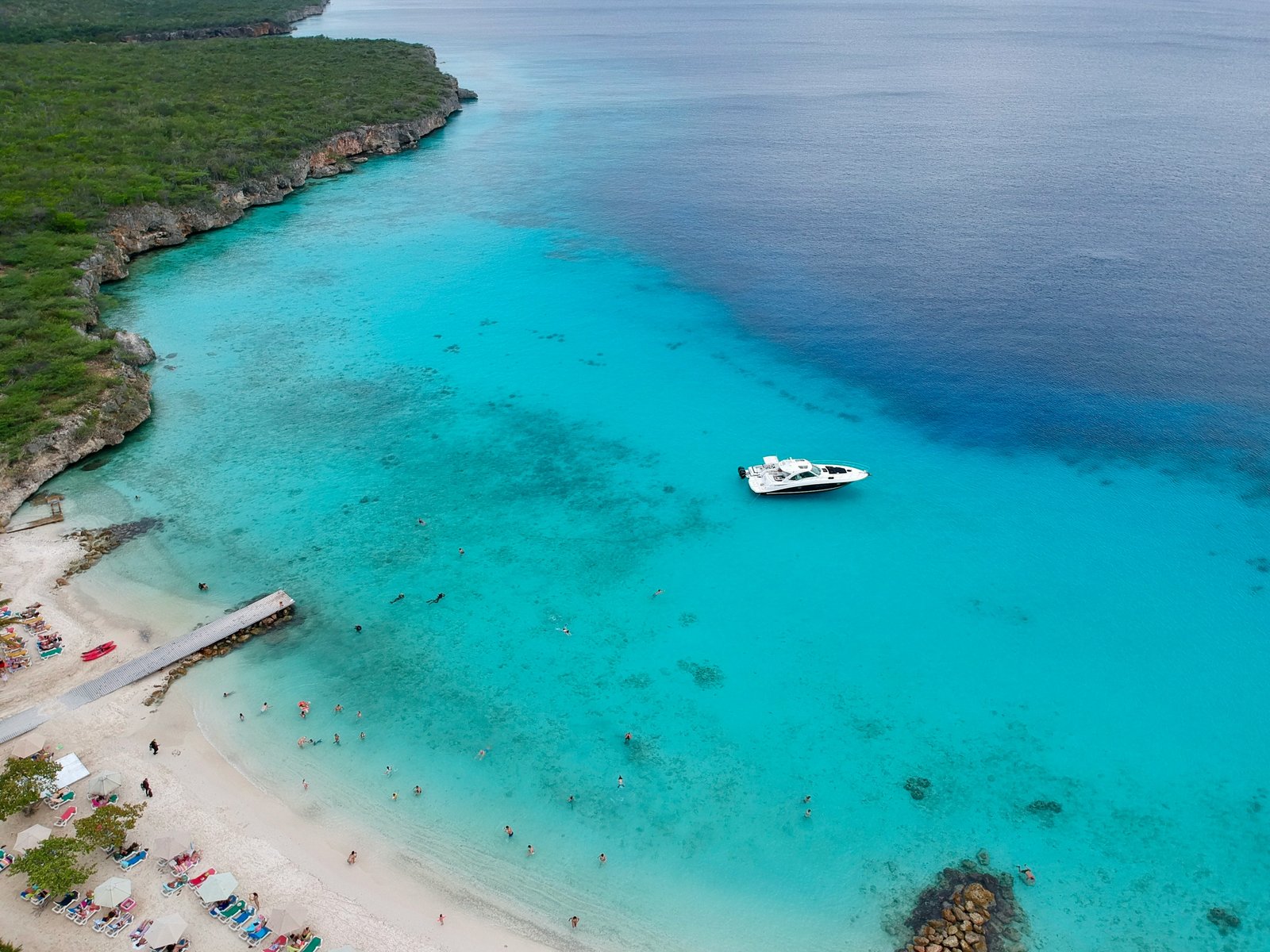
Curacao, an island that often prompts the question, “Where is Curacao Island?” from intrigued travelers, is a treasure nestled in the southern Caribbean Sea.
This idyllic destination is strategically positioned just about 65 kilometers north of the Venezuelan coast, offering a gateway to the wonders of the Caribbean’s diverse landscapes and cultures.
As part of the Lesser Antilles, Curacao is the “C” in the ABC islands, which also include its neighboring islands, Aruba to its west and Bonaire to its east.
Together, these islands form a group known for their distinct charm, captivating beauty, and a climate that beckons visitors year-round.
Curacao’s geographical position plays a pivotal role in its allure as a travel destination.
The island lies outside the hurricane belt, which grants it a particularly favorable climate with less rainfall and a reduced risk of tropical storms compared to other Caribbean islands.
This geographical advantage allows for uninterrupted travel and adventure opportunities throughout the year, making it an ideal spot for vacationers and explorers alike.
The island’s proximity to other notable landmarks in the Caribbean and South America enriches its appeal.
To the south, the Venezuelan coast offers a vista of the vast South American continent, bringing a blend of cultures and influences that have shaped Curacao’s vibrant heritage.
To the north, the vast expanse of the Caribbean Sea opens up endless possibilities for exploration, from sailing and fishing to diving into the underexplored waters teeming with marine life.
Regarding visual aids, while we can’t directly include copyrighted maps in this text, we highly recommend visiting reputable map services online for a detailed view of Curacao’s location.
Interactive maps on platforms such as Google Maps or Bing Maps can provide an enriching perspective on Curacao’s exact position in the Caribbean, its neighboring countries, and islands.
These resources are invaluable for travelers planning their journey, offering insights into distances, travel routes, and the island’s relationship with its Caribbean neighbors and the broader geographical context.
Curacao’s unique geographical location is not just a matter of coordinates; it’s a key to its rich biodiversity, cultural diversity, and the extraordinary range of experiences it offers.
From its vibrant coral reefs just off the coast to the lively rhythms of Willemstad’s streets, the geographical context of Curacao enhances every aspect of the island’s charm, making it a standout destination in the Caribbean.
Historical and Cultural Background
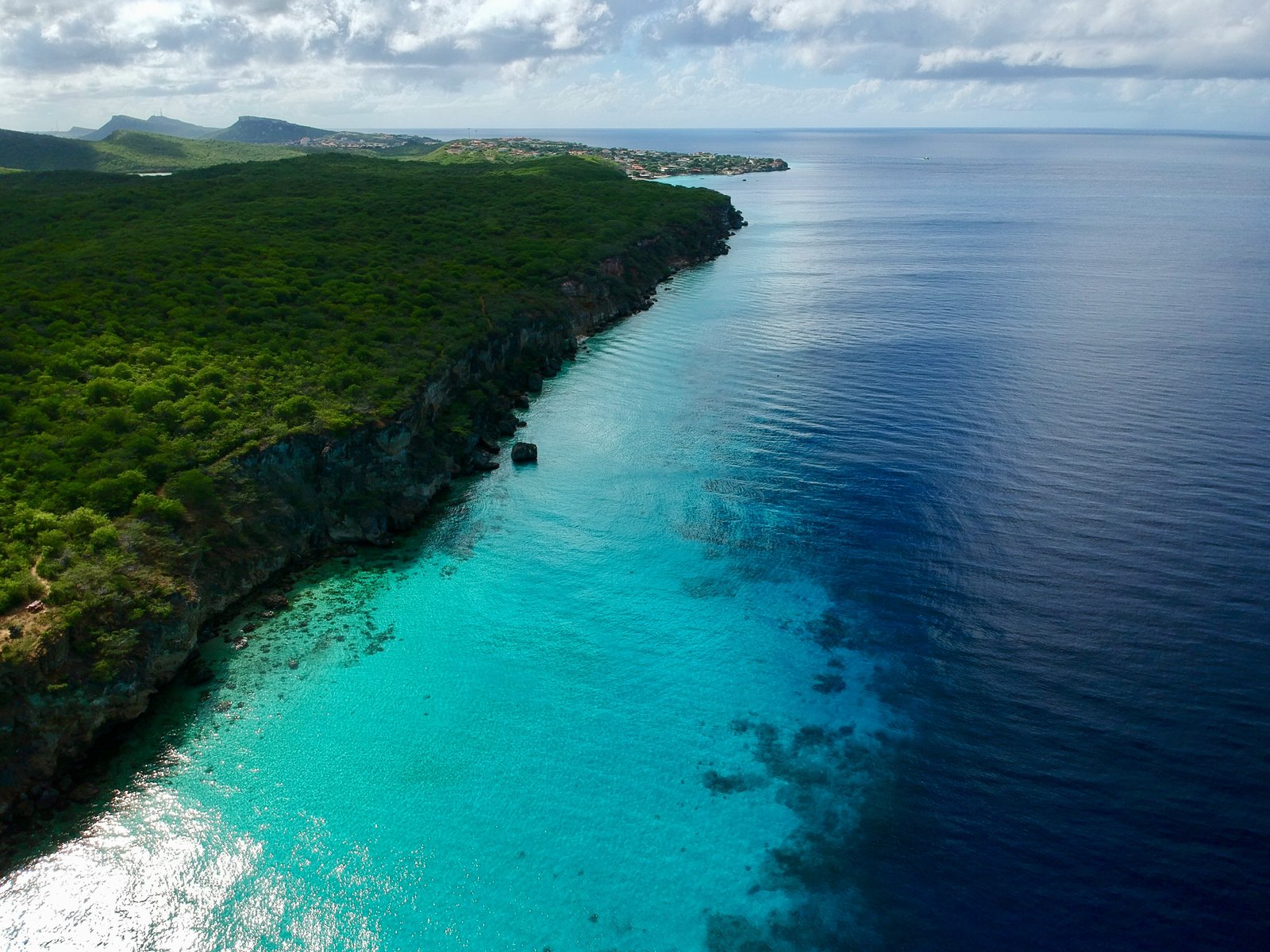
The tapestry of Curacao’s history and culture is as vivid and complex as the island’s stunning coral reefs.
To truly appreciate the essence of Curacao, it’s essential to delve into its rich historical roots and the mosaic of cultures that shape its identity.
The question, “Where is Curacao Island?” extends beyond geography, inviting a journey through time to explore the island’s significant cultural heritage and the influences that have molded it into the captivating destination it is today.
Brief History of Curacao and Its Cultural Significance
Curacao’s story begins long before European explorers set foot on its shores.
The island was first inhabited by the Arawak people, indigenous to the region, who left behind a legacy of petroglyphs that whisper tales of Curacao’s earliest chapters.
The arrival of the Spanish in the early 16th century marked the beginning of European influence, but it was the Dutch who would leave a lasting imprint on the island.
In 1634, Curacao came under Dutch control, serving as a strategic naval base and center of commerce within the Caribbean’s bustling trade routes.
The Dutch West India Company established Curacao as a slave trading hub, a dark period that significantly impacted the island’s demographic and cultural landscape.
The abolition of slavery in the 19th century paved the way for a new era, but the echoes of this history remain woven into the fabric of Curacao’s society.
Today, Curacao stands as a symbol of resilience and cultural fusion, celebrating its complex heritage with pride and reverence.
Local Languages, Traditions, and the Unique Blend of Cultures
Curacao’s cultural richness is mirrored in its linguistic landscape, with Papiamentu, Dutch, and English serving as official languages.
Papiamentu, a creole language born from African, Spanish, Portuguese, Dutch, and Native American influences, encapsulates the island’s multicultural essence.
This language is a living testament to Curacao’s history, embodying the island’s spirit of diversity and unity.
Traditions on Curacao are a colorful mosaic of African, European, and indigenous customs, each adding depth and vibrancy to the island’s cultural identity.
Celebrations such as Carnival and the Harvest Festival (Seú) showcase the island’s musical heritage, dance, and traditional attire, drawing both locals and visitors into the heart of Curacao’s communal spirit.
The island’s cuisine further reflects its cultural melting pot, blending Dutch, Caribbean, and Latin flavors into a distinctive culinary experience.
The Influence of Dutch Colonization and Its Visible Marks Today
The legacy of Dutch colonization is indelibly etched into Curacao’s architectural, political, and social framework.
The iconic Handelskade waterfront in Willemstad, with its brightly colored Dutch colonial buildings, is a UNESCO World Heritage site and symbolizes the harmonious blend of European design with Caribbean vibrancy.
The legal system, educational structure, and administrative practices also bear the hallmarks of Dutch influence, though adapted to fit the unique context of Curacao.
Despite the complex history of colonization, Curacao has emerged as a beacon of cultural integration and tolerance, embracing its diverse heritage while forging a distinct identity.
The island’s commitment to celebrating its multifaceted culture while looking towards a future of innovation and inclusivity is what truly sets Curacao apart as a gem in the Caribbean.
Curacao’s Climate and Best Time to Visit
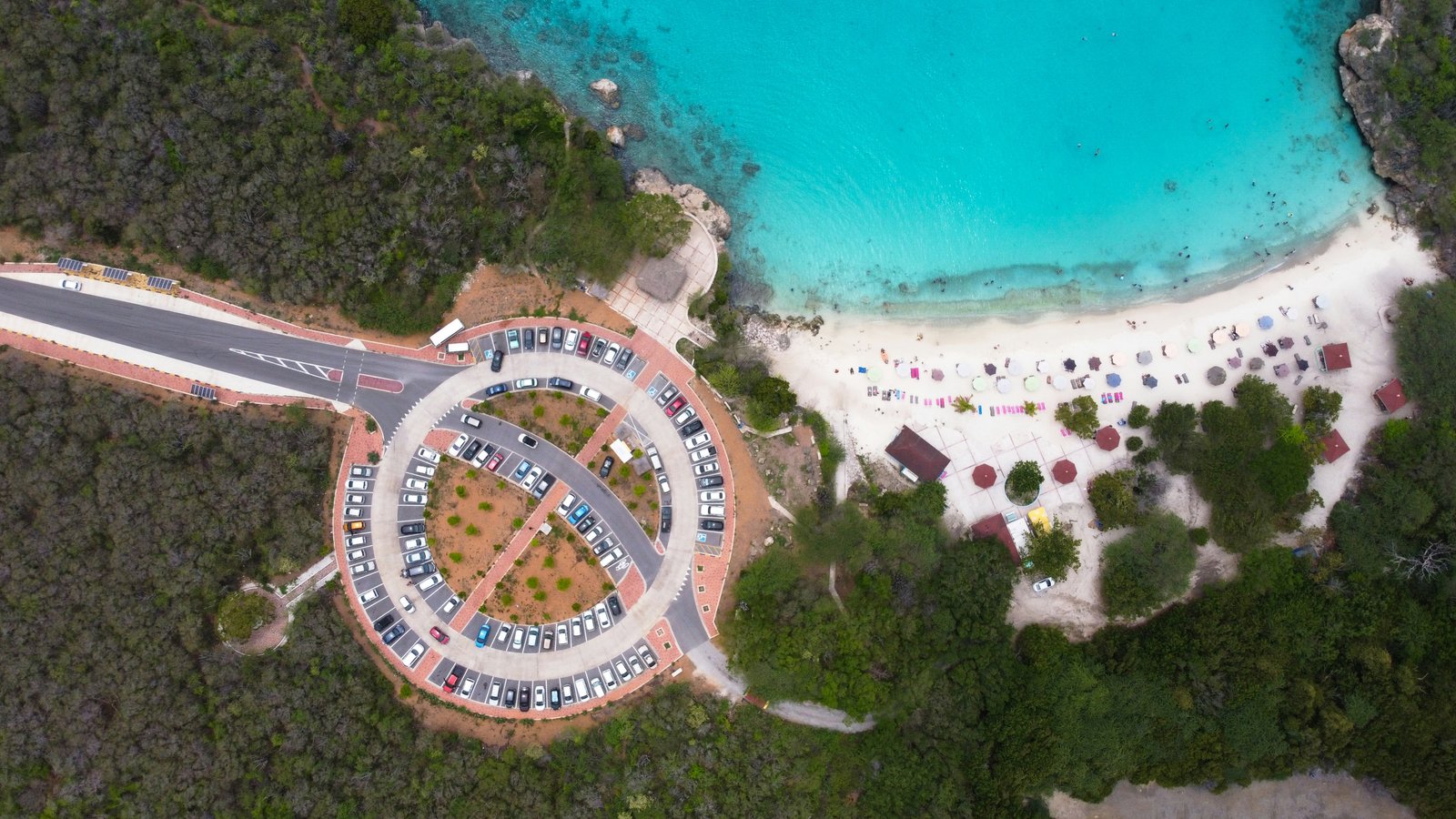
Curacao’s allure is not only rooted in its vibrant history and cultural diversity but also in its enviable tropical climate, which promises sun-soaked days and breezy evenings almost year-round.
Understanding the climate is essential for planning your visit, ensuring you experience the best of what Curacao has to offer under the most favorable weather conditions.
Overview of Curacao’s Tropical Climate
Curacao enjoys a semi-arid, tropical savannah climate, characterized by a warm, sunny weather pattern throughout the year.
Temperatures on the island average around 28°C (82°F), with cooling trade winds offering a respite from the heat.
Unlike many of its Caribbean neighbors, Curacao sits outside the hurricane belt, which means it’s less susceptible to the hurricanes that can impact other parts of the region from June to November.
This geographical advantage results in a relatively dry climate with minimal rainfall, making Curacao a year-round destination for travelers seeking sun and warmth.
Recommendations on the Best Time to Visit Based on Weather Patterns
The best time to visit Curacao is from May to November, during the off-peak season, when the island is less crowded, and accommodation rates are more favorable.
During these months, the weather remains warm and pleasant, with occasional brief showers that rarely disrupt outdoor activities.
This period also coincides with some of Curacao’s vibrant cultural festivals, providing visitors with a unique opportunity to experience the island’s rich traditions firsthand.
For those looking to indulge in underwater adventures, such as snorkeling and scuba diving, Curacao’s clear waters and excellent visibility are consistent throughout the year.
However, the calmest sea conditions are typically found from April to September, making it an ideal time for diving enthusiasts to explore the island’s spectacular coral reefs and marine life.
How Climate Influences Tourist Activities and Experiences
Curacao’s climate plays a pivotal role in shaping the tourist experience, from beach lounging and water sports to exploring the island’s natural and cultural landmarks.
The warm, sunny weather facilitates a wide range of outdoor activities, allowing visitors to fully immerse themselves in everything Curacao has to offer.
Whether it’s hiking through the rugged landscapes of Christoffel National Park, sailing along the picturesque coast, or simply enjoying a leisurely day at one of the island’s many stunning beaches, the climate ensures that every moment spent in Curacao is filled with warmth and sunshine.
However, it’s worth noting that during the peak of the dry season, from February to June, the island’s vegetation can be less lush, and water levels in some natural attractions, like the Hato Caves, may be lower.
Conversely, the brief rainy spells in the late summer and fall can bring a refreshing change to the landscape, revitalizing the flora and making the island’s natural beauty even more vibrant.
Top Reasons to Visit Curacao in 2024
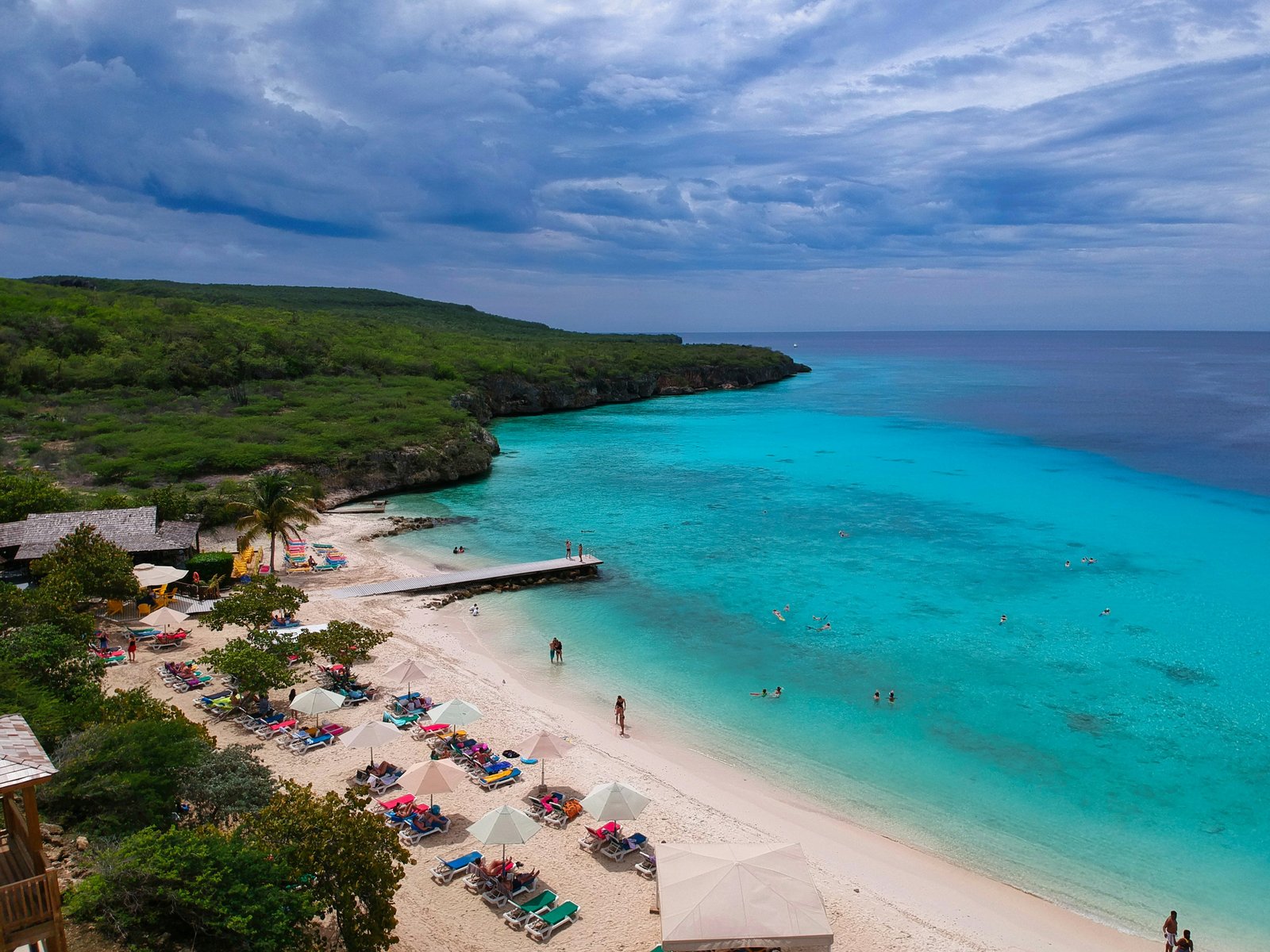
Curacao beckons with a kaleidoscope of experiences, each more inviting than the last.
As travelers increasingly seek destinations that offer a blend of natural beauty, cultural richness, and sustainable tourism, Curacao emerges as a clear favorite.
Here are the top reasons why Curacao should be your next vacation destination in 2024.
1. Natural Beauty and Beaches
Curacao’s landscapes are a testament to the island’s breathtaking natural beauty.
From the serene beaches with their crystal-clear waters and soft, white sands to the rugged terrain of its national parks, Curacao offers a natural paradise for lovers of the outdoors.
Beaches like Playa Kenepa Grandi and Cas Abao are perfect for sunbathing, swimming, and snorkeling, providing idyllic settings against the backdrop of the Caribbean Sea.
The island is also at the forefront of conservation efforts and eco-friendly initiatives, ensuring the preservation of its pristine environments for future generations.
Efforts include coral reef restoration projects and sustainable tourism practices that minimize environmental impact and support the local community.
These initiatives make visiting Curacao a responsible choice for eco-conscious travelers.
2. Diving and Water Sports
Curacao is a premier destination for diving enthusiasts, known for its world-class diving spots and rich marine biodiversity.
The island’s underwater landscapes are adorned with colorful coral reefs, vibrant sea life, and sunken ships, creating an underwater wonderland for divers of all levels.
Popular diving sites include the Mushroom Forest, renowned for its unique coral formations, and the Tugboat wreck, a shallow dive perfect for beginners.
Beyond diving, Curacao offers a plethora of water sports and activities, from windsurfing and kiteboarding to kayaking and stand-up paddleboarding.
The island’s favorable winds and calm waters provide ideal conditions for both thrilling adventures and leisurely explorations of the coastline.
3. Cultural Festivals and Events
Curacao’s calendar is dotted with cultural festivals and events that showcase the island’s rich heritage and diverse cultural tapestry.
In 2024, visitors can look forward to experiencing traditions that span centuries, including the colorful Curacao Carnival, with its lively parades and music, and the Curacao North Sea Jazz Festival, which attracts international artists and music lovers from around the globe.
These festivals offer a glimpse into the soul of Curacao, celebrating its history, art, and community spirit.
They provide visitors with an opportunity to immerse themselves in the local culture, meeting residents and experiencing the warmth and hospitality that Curacao is known for.
4. Culinary Experiences
The culinary landscape of Curacao is as diverse as its people, offering a fusion of flavors that reflect the island’s multicultural heritage.
From savory stews and fresh seafood to sweet treats and exotic fruits, Curacao’s cuisine is a delight for the senses.
Restaurants and eateries across the island serve up local dishes such as Keshi Yena and Arepa di Pampuna, alongside international fare that incorporates Dutch, Caribbean, and Latin influences.
Exploring Curacao’s food scene is a journey through the island’s history and cultural influences, with each dish telling a story of its origins and the people who make Curacao their home.
5. Unique Attractions and Activities
Curacao is home to unique attractions and activities that you won’t find anywhere else.
The iconic Handelskade in Willemstad offers a picturesque setting with its colorful Dutch colonial architecture, while the Curacao Sea Aquarium provides an up-close look at the island’s marine life in an eco-friendly environment.
For the adventurous traveler, Curacao offers off-the-beaten-path experiences such as exploring the Hato Caves, with their ancient limestone formations and cave drawings, or hiking in the Christoffel National Park to reach the island’s highest point for breathtaking views.
Travel Tips and Practical Information
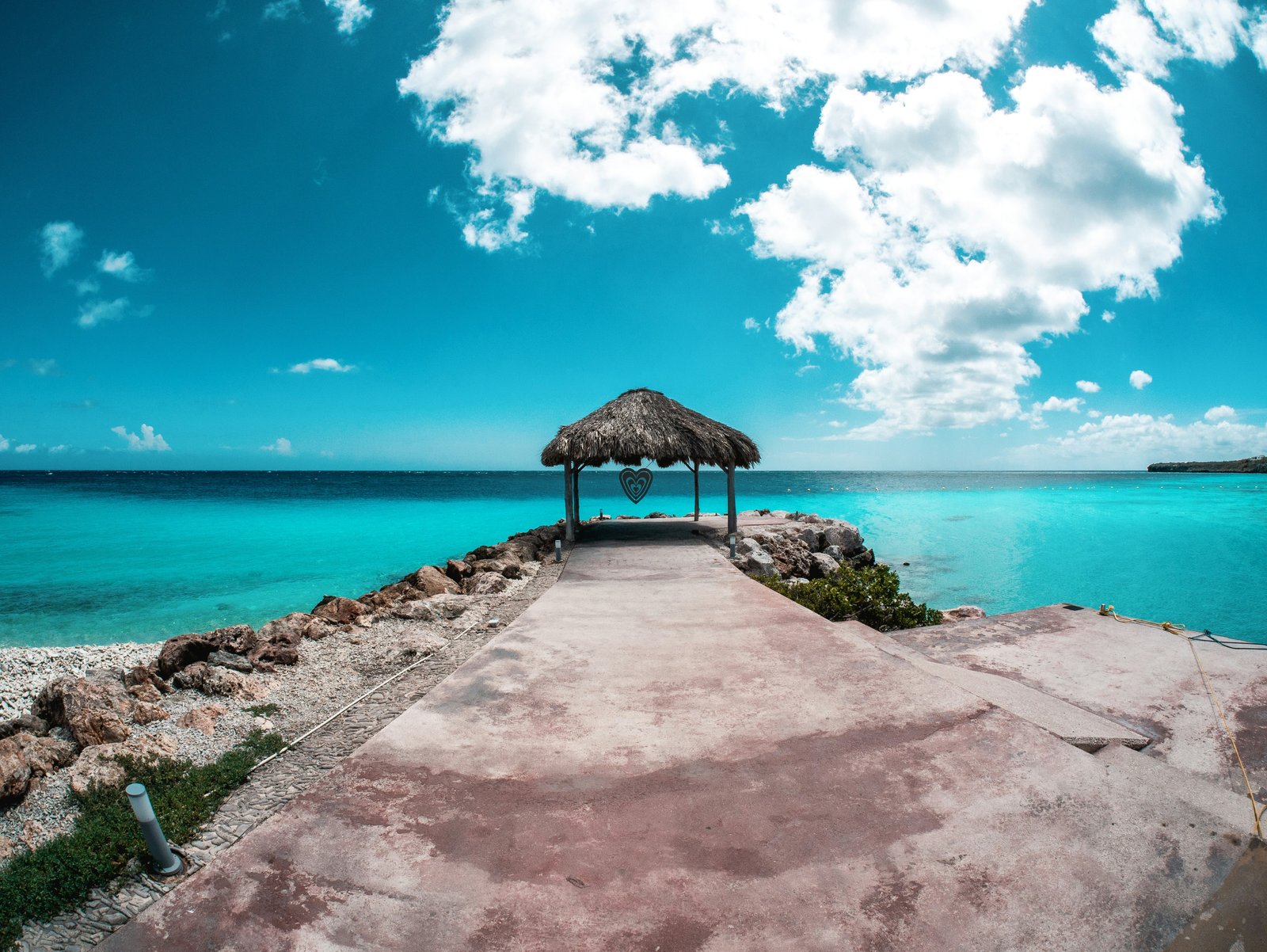
Visiting Curacao is an exciting adventure, filled with the promise of new experiences and discoveries.
To ensure your trip is as enjoyable and smooth as possible, it’s important to be well-informed about the practical aspects of traveling to this Caribbean paradise.
Here are some essential travel tips and practical information to help you plan your visit.
Essential Travel Tips for Visiting Curacao
- Currency: The official currency of Curacao is the Netherlands Antillean Guilder (ANG), commonly referred to as the Florin. However, US dollars are widely accepted across the island, and ATMs are readily available. Credit cards are accepted at most establishments, but it’s always a good idea to carry some cash for small purchases, especially if you plan to explore more remote areas.
- Transportation: Renting a car is the most convenient way to explore Curacao, giving you the freedom to visit its many beaches and attractions at your own pace. There are several reputable car rental agencies available at the airport and throughout Willemstad. Public transportation and taxis are also available, but keep in mind that bus services can be infrequent, and taxi fares should be agreed upon in advance.
- Accommodations: Curacao offers a wide range of accommodations to suit every budget and preference, from luxury resorts and boutique hotels to vacation rentals and eco-lodges. Booking in advance is recommended, especially if you’re visiting during peak travel seasons or special events.
Health and Safety Information
- COVID-19 Protocols: As of my last update, travel restrictions and COVID-19 protocols are subject to change based on the global and local health situation. It’s essential to check the latest travel advisories and entry requirements before your trip. Always follow local guidelines regarding mask-wearing, social distancing, and sanitation practices.
- General Safety: Curacao is generally safe for travelers, but, as with any destination, it’s important to exercise common sense and caution. Keep your belongings secure, be mindful of your surroundings, and avoid isolated areas after dark. The tap water in Curacao is safe to drink, one of the few Caribbean islands where this is the case.
Tips on Getting the Most Out of Your Visit
- Cultural Etiquette: Curacao’s culture is a blend of various influences, marked by openness and hospitality. Greeting people with a friendly “Bon dia” (Good morning) or “Bon tardi” (Good afternoon) in Papiamentu can go a long way in showing respect for the local culture. Dress modestly when not on the beach, and always ask permission before taking photos of residents.
- Language Tips: While Papiamentu is the lingua franca of Curacao, Dutch and English are widely spoken, and many locals also speak Spanish. Learning a few basic phrases in Papiamentu can enrich your experience and help you connect with the island’s residents.
- Maximize Your Experience: To truly immerse yourself in all that Curacao has to offer, consider exploring beyond the tourist hotspots. Engage with the local community, try traditional dishes, and participate in cultural or environmental conservation activities. Respect the natural environment by following eco-friendly practices and supporting local conservation efforts.
Conclusion
As we draw our exploration of Curacao to a close, it’s clear that this vibrant island stands as an unmissable destination in 2024.
With its rich tapestry of cultures, breathtaking natural beauty, and a warm, welcoming atmosphere, Curacao offers a travel experience that transcends the ordinary.
From the azure waters of its renowned beaches to the lively streets of Willemstad, each corner of Curacao tells a story, inviting visitors to immerse themselves in its unique charm.
Curacao’s allure is not just in its picturesque landscapes or the vibrant hues of its architecture; it lies in the depth of experiences it offers.
Whether it’s diving into the crystal-clear waters to explore the coral reefs, celebrating with the locals at one of the island’s many festivals, or simply enjoying the tranquility of a secluded beach, Curacao promises a richness of experiences that cater to every type of traveler.
Beyond the well-trodden paths lie hidden gems waiting to be discovered.
Venturing beyond the typical tourist spots opens up a world of possibilities—from hiking trails that offer panoramic views of the island to local eateries where you can taste the authentic flavors of Curacao.
Each step off the beaten path is an opportunity to connect more deeply with the island’s spirit, its people, and the natural environment.
Curacao in 2024 is more than a destination; it’s a journey towards discovering the beauty of diversity, the joy of exploration, and the warmth of genuine hospitality.
It’s an invitation to experience a place where history, culture, and nature converge to create something truly magical.
As you consider your travel plans for 2024, think of Curacao not just as a place to visit, but as a world to enter—a world full of adventure, relaxation, and discovery.
Whether you’re seeking a getaway filled with activity and excitement or a serene retreat from the hustle and bustle of everyday life, Curacao offers an enriching experience that will leave you with memories to cherish for a lifetime.
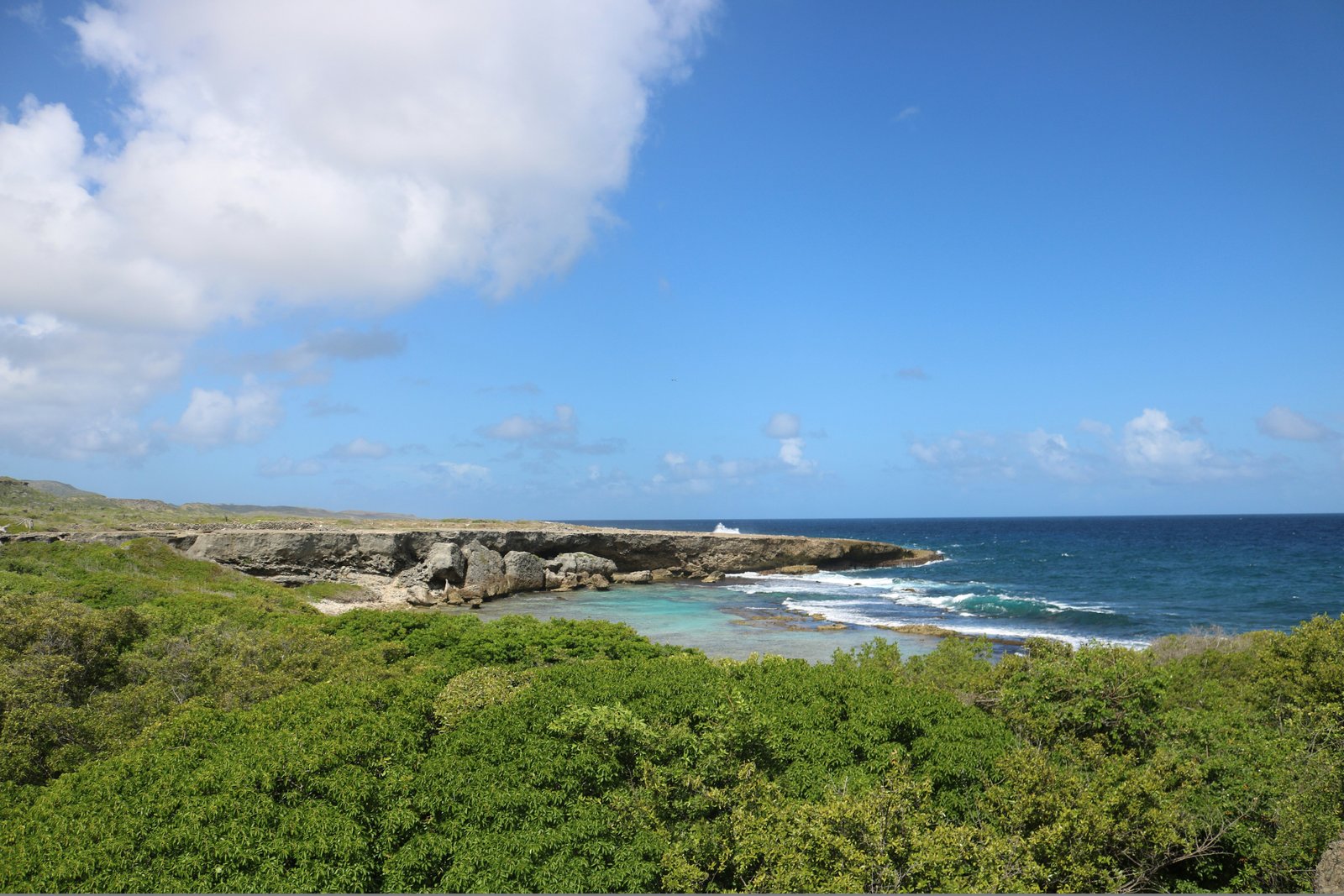
FAQ’s About Curacao Island:
Is Curaçao a Beautiful Island?
Yes, Curaçao is widely regarded as a beautiful island, known for its stunning beaches, vibrant coral reefs, and the colorful architecture of Willemstad, a UNESCO World Heritage Site.
The island’s natural beauty extends beyond its coastline, with captivating landscapes that include rugged terrains, serene bays, and the unique Hato Caves.
Curaçao’s blend of natural wonders and cultural richness makes it a picturesque and appealing destination.
Where is Curaçao Language?
The primary language spoken in Curaçao is Papiamentu, a Creole language that evolved from the influence of African languages, Portuguese, Dutch, Spanish, and a few others.
Papiamentu is the heart and soul of Curaçao’s culture, used in daily communication, media, and education alongside Dutch, which is the official administrative language.
English and Spanish are also widely spoken and understood due to the island’s international tourism and its proximity to South America.
Is Curaçao Cheap or Expensive?
The cost of visiting Curaçao can vary widely depending on your travel style and preferences.
Generally, Curaçao is considered to be moderately expensive, with prices for accommodations, dining, and activities higher than some other Caribbean destinations but comparable to or slightly lower than the more popular ones.
Budget travelers can find affordable lodging options and eateries, while those seeking luxury will find high-end resorts and fine dining restaurants.
Planning and budgeting accordingly can help manage expenses and make a trip to Curaçao enjoyable without breaking the bank.
How Safe is It to Go to Curaçao?
Curaçao is generally considered safe for tourists.
Like many popular travel destinations, it is important for visitors to exercise common sense safety precautions, such as safeguarding valuables, being aware of their surroundings, and avoiding isolated areas after dark.
Petty crime can occur, as in any tourist location, but serious crimes against tourists are relatively rare.
The local authorities and tourism operators are keen on ensuring visitors’ safety, making Curaçao a welcoming place for travelers.
What Are the Downsides of Curaçao?
While Curaçao is a captivating destination, it’s fair to acknowledge a few downsides:
- Cost: As mentioned, Curaçao can be on the expensive side, especially for travelers on a tight budget.
- Sargassum Seaweed: Depending on the season, some beaches may experience sargassum seaweed influxes, which can affect beach enjoyment.
- Limited Public Transport: The island’s public transportation system can be infrequent and limited, making it less convenient for tourists without a rental car.
- Hurricane Season: Though Curaçao is outside the hurricane belt, the Caribbean hurricane season (June to November) can still bring unpredictable weather.
What to Avoid in Curaçao?
- Avoid isolated areas at night: For personal safety, it’s advisable to stay in well-lit, populated areas after dark.
- Do not ignore local customs and etiquette: Being respectful of the island’s culture and norms is essential.
- Avoid disregarding environmental rules: When diving, snorkeling, or visiting natural parks, follow guidelines to protect the environment.
What Food is Curaçao Known For?
Curaçao is known for its diverse and flavorful cuisine, which reflects its multicultural heritage. Some of the island’s most famous dishes include:
- Keshi Yena: A stuffed cheese dish with meat, vegetables, and spices.
- Iguana Soup: Considered a delicacy and believed to have medicinal properties.
- Seafood: Fresh catch such as red snapper, mahi-mahi, and lionfish prepared in various ways.
- Bitterballen: Dutch-inspired meatballs, often served as a snack or appetizer.
Can You Drink the Water Curaçao?
Yes, the tap water in Curaçao is safe to drink.
The water is extensively treated and meets high-quality standards, making it some of the cleanest and safest drinking water in the Caribbean.
What is the Currency in Curaçao?
The official currency of Curaçao is the Netherlands Antillean Guilder (ANG), also known as the Florin.
However, US dollars are widely accepted throughout the island, and prices are often listed in both currencies.
ATMs and credit card facilities are readily available, making transactions convenient for travelers.





